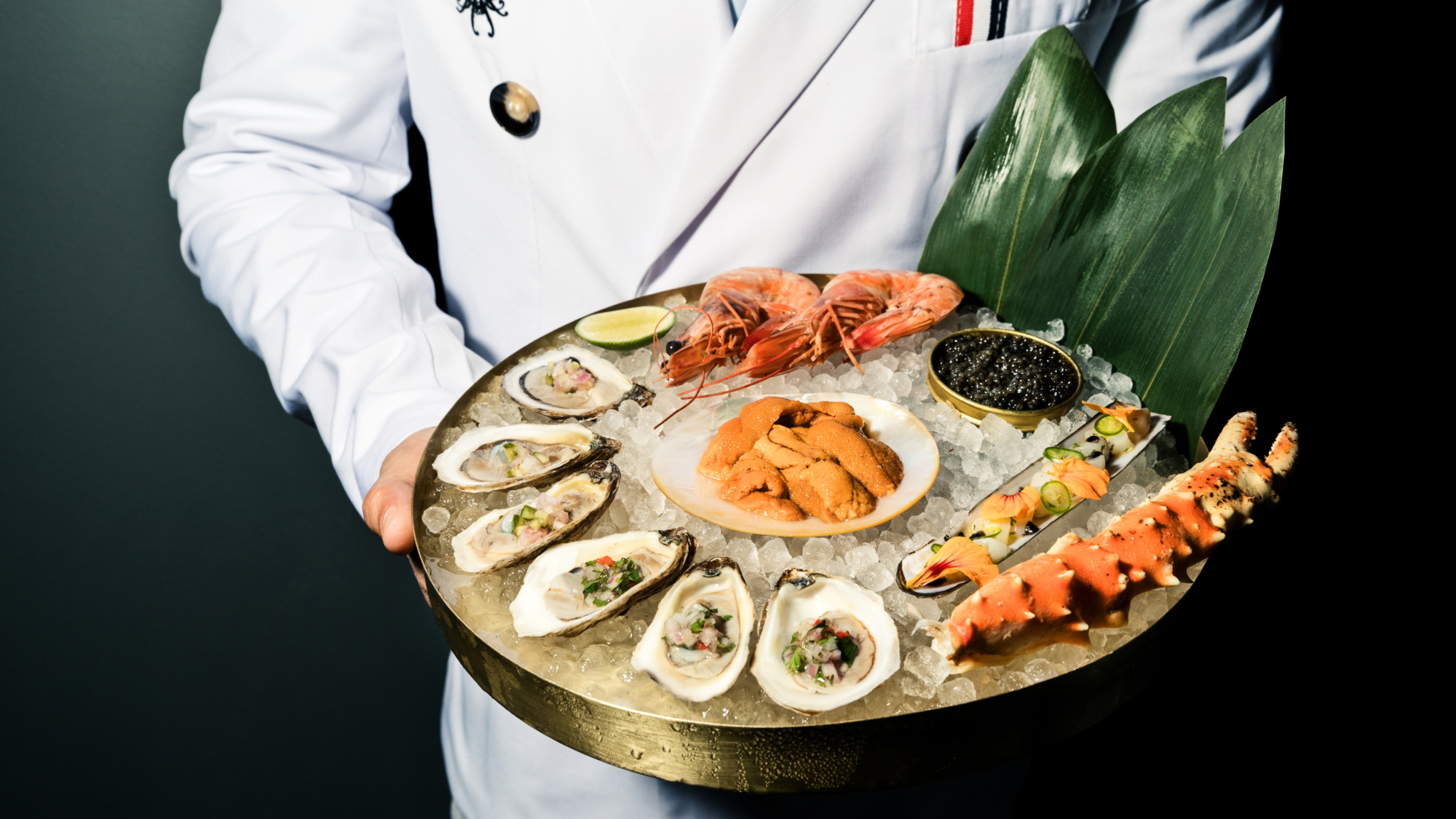
Meet Ceviche Project, a Tiny Temple to Raw Seafood
From Peru to Japan, many cultures understand the importance of sourcing perfectly fresh seafood and preparing it simply, with as little cooking as possible. At Ceviche Project, chef Octavio Olivas taps into Mexico’s rich history of raw seafood preparations.
The lawyer-turned-restaurateur grew up cruising coastal Mexico in a VW Kombi van with his father. Lunch was whatever they could pull from the ocean that day, seasoned simply with a kiss of lime. Since then, Olivas has dedicated his career to recreating those perfect seafood moments for himself and others. Here’s everything you need to know before paying a visit to his jewelbox of a restaurant in Silver Lake.
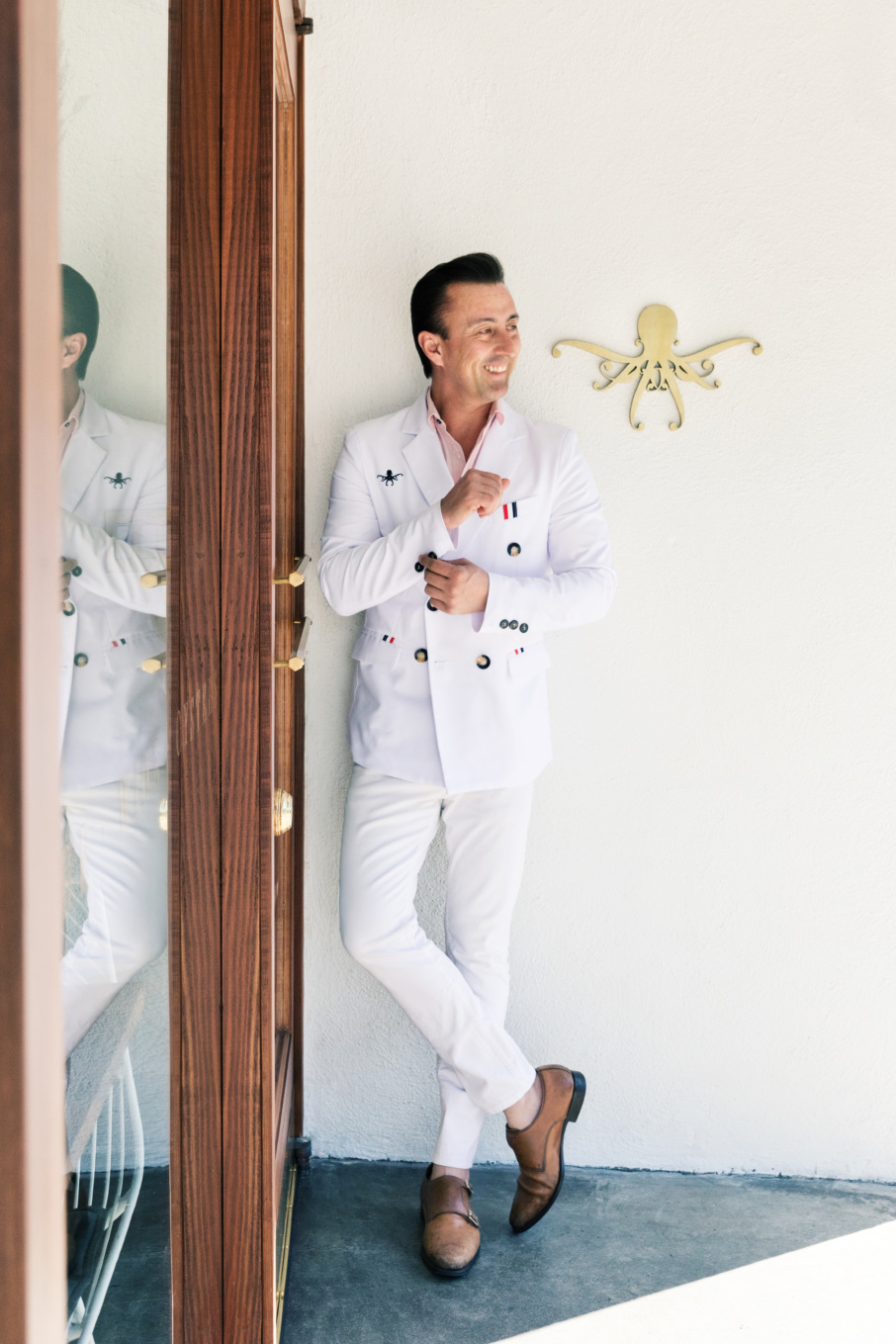
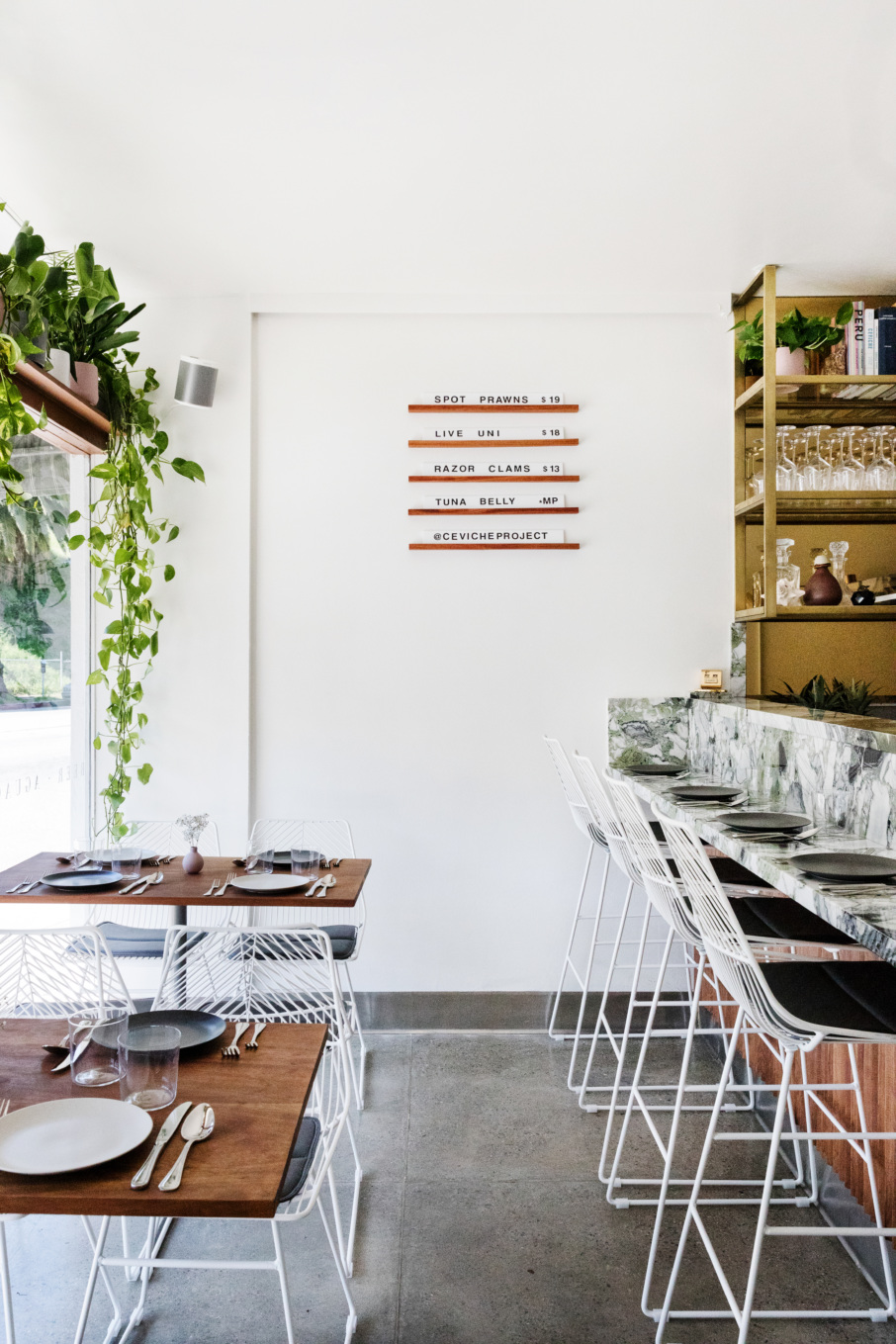
1. It all started as a party.
“I started organizing these parties where I would make ceviche from sushi-grade fish, pour cocktails, and spin ’70s Cumbia records,” says Olivas about Ceviche Project’s origins. For his first-ever pop up in November 2011, the chef and his wife took over Bar Covell in Los Feliz. After that, it was off to the races. He took the concept to L&E Oyster Bar, Soho House, The Mondrian Hotel, and The Four Seasons Mexico City, to name a few.
Olivas’ raw fish fêtes started gaining recognition, and it soon came time to seek a permanent home for Ceviche Project. In 2019, he secured an impossibly tiny spot on Hyperion Avenue. Olivas personally designed and built the 450 square-foot dining room. “It’s tiny, like a bedroom,” says the chef, smiling. “You end up talking to the people next to you because it has that super-tight New York vibe.”
- How Mother Wolf’s Evan Funke Puts His Stamp on Roman Food, In Five Dishes
- Saltie Girl Is the Sunset Strip’s Splashy New Seafood Spot
- The Five Dishes You Must Order at Majordōmo
- David Rosoff Is Back in Silver Lake With Bar Moruno (But That’s Not All)
- It’s Jon & Vinny’s World, But Helen Johannesen Keeps Our Glasses Full In It

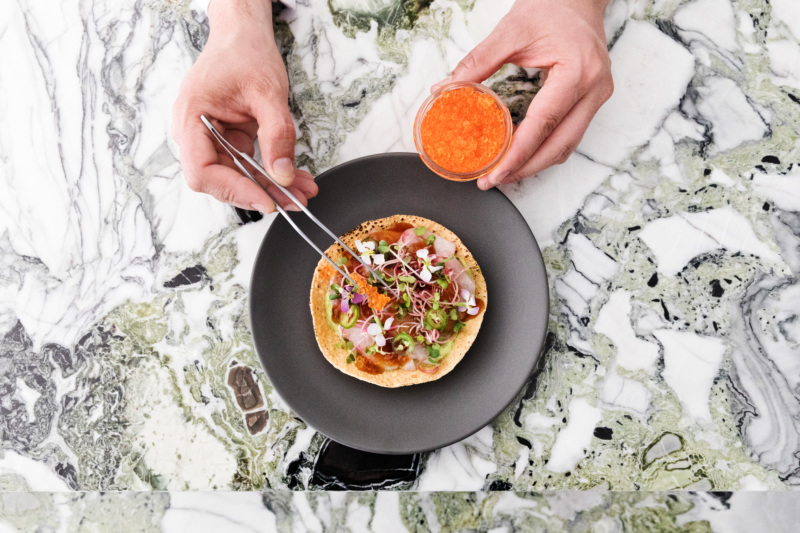
2. You’re here, of course, for the impeccable seafood.
Request a seat at the sleek marble bar so you can watch the master at work. Start with the Peruvian scallops on the half shell with the uni addition. Olivas cracks open the purple scallop shells to reveal the sweet flesh, and places them on an ice-filled platter with two gorgeous gold spoons. He adds a few glistening pomegranate seeds to each shell, along with sweet tangerine supremes, serrano chile, fruity olive oil, micro cilantro, and a sprinkling of black lava salt. No wonder Jonathan Gold once said that “a beautiful ceviche can look like a watercolor painting on a plate.”
In addition to daily specials, there’s a regular menu with plenty of hits, like the tostada topped with shrimp and Caribbean (aka Mayan) octopus. The chef lines the tostada with a slightly spicy avocado mousse, and dresses the mountain of tender seafood with charred onion oil. The king kanpachi tostada is smartly constructed with trout roe, grapefruit, and a gelee made from bonito dashi, ponzu, and soy. Olivas uses each ingredient to complement the flavor of the fish, and nothing feels superfluous.
3. The libations come correct — especially the michelada.
There’s a well-curated list of natural wines from Austria, Croatia, Slovenia, Italy, and Spain. There are also artisanal Mexican beers from Cervecería de Colima, as well as a yuzu-sake cocktail and an Aperol spritz. But what you really want is the michelada. It has 10 ingredients (including shrimp), as well as more common elements like Maggi and lime, and it takes a hell of a long time to make, according to Olivas. Unlike most throw-away miches in Los Angeles, this one has deep, balanced flavor and subtle spice.
Hot tip: Sometime in the near future, Olivas will add NAMI, a sake brewed in Mexico, on the Ceviche Project menu.
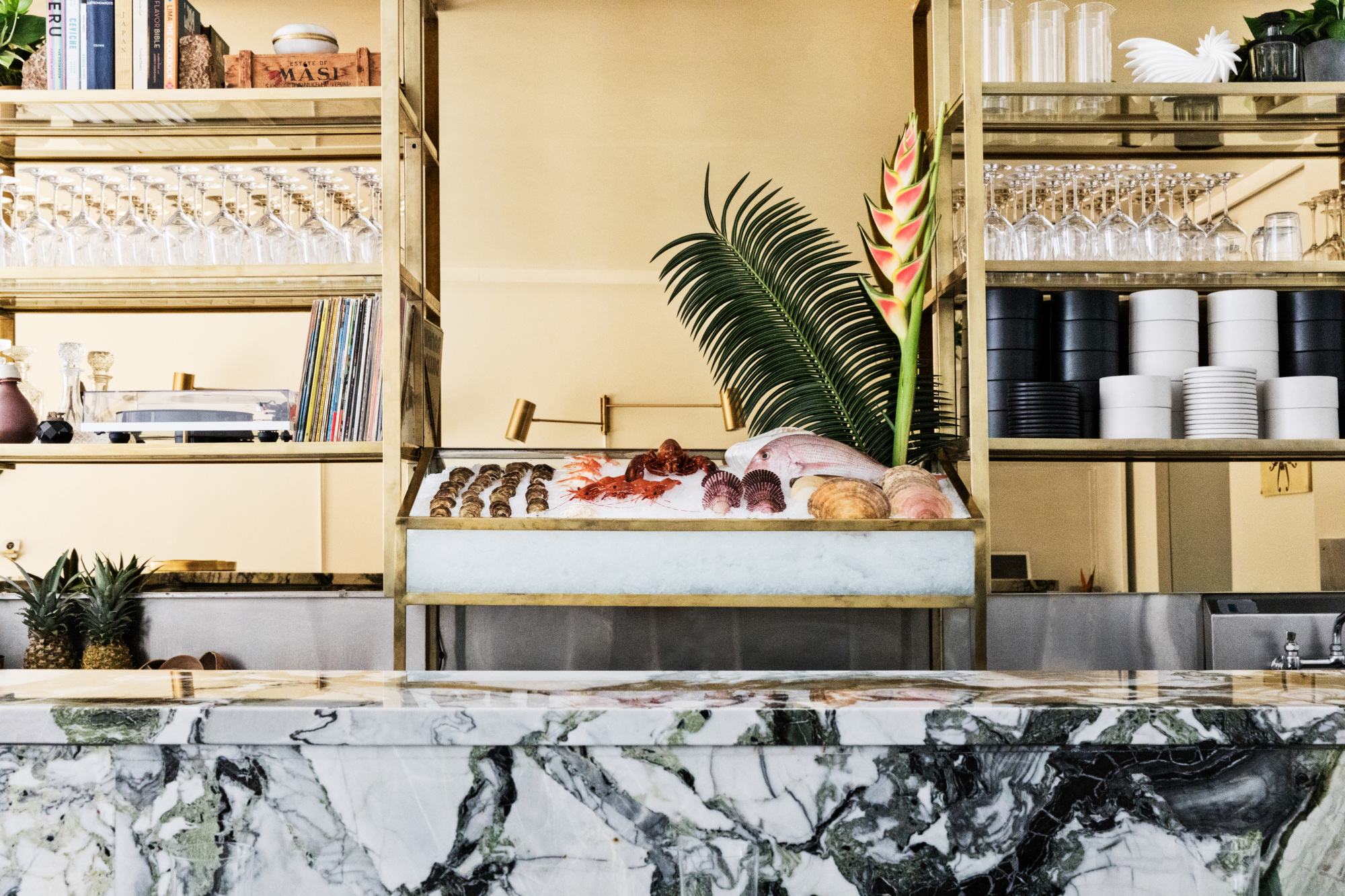
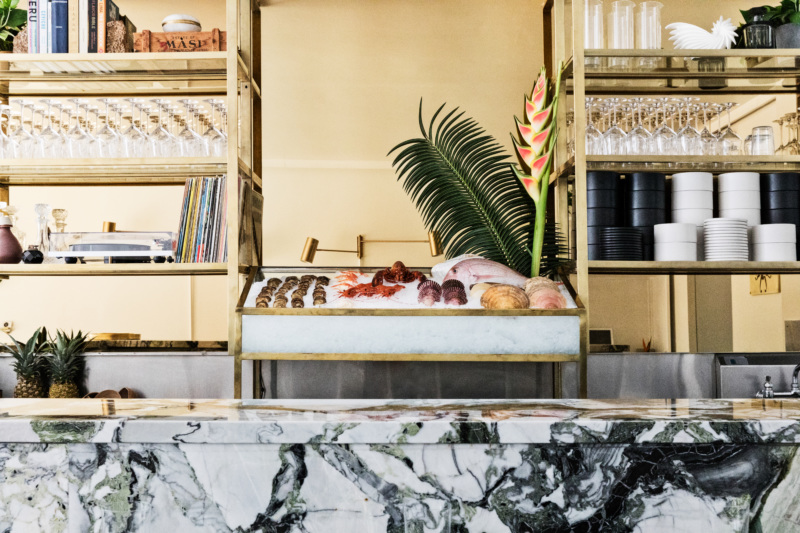
4. The vibes lean sexy and tropical.
Located on Hyperion Avenue just down the street from Trader Joe’s and Gelson’s, Ceviche Project does not look particularly special from the outside. You’ll know you’re in the right place when you see a large sign that says “LACA Dermatology.”
When you duck into the tiny restaurant, however, you’ll be greeted by vintage Calypso and Cumbia rhythms, and an atmosphere that feels decidedly fun, intimate, and lively. There are about 10 seats at the bar, and a handful of tables inside and along the sidewalk. The interior gives strong Condesa-meets-Miami vibes, with gold mirrors, brass accents, and picture-perfect bivalves displayed on ice. The staff is minimal, but attentive, and clearly passionate about seafood.
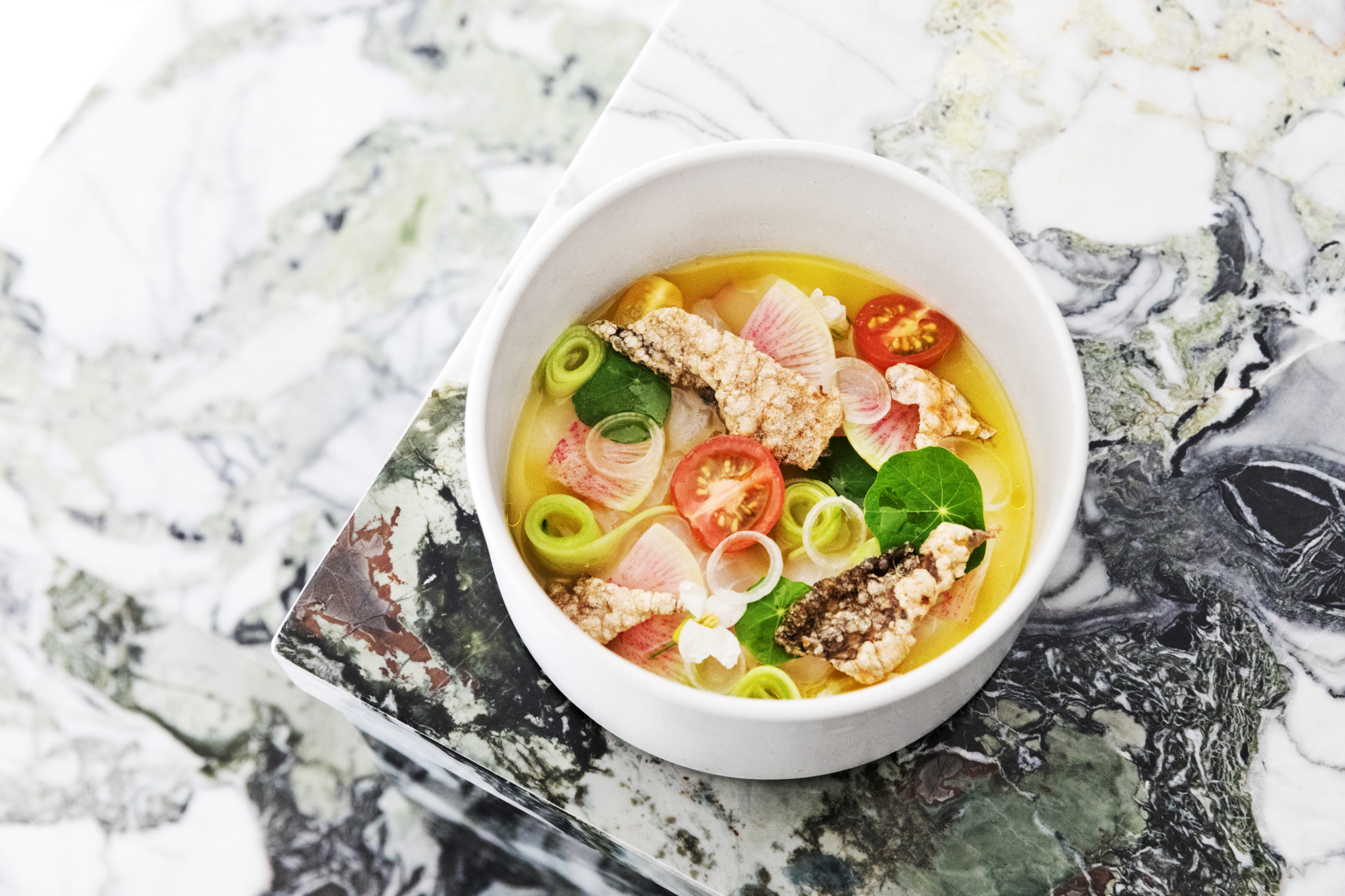
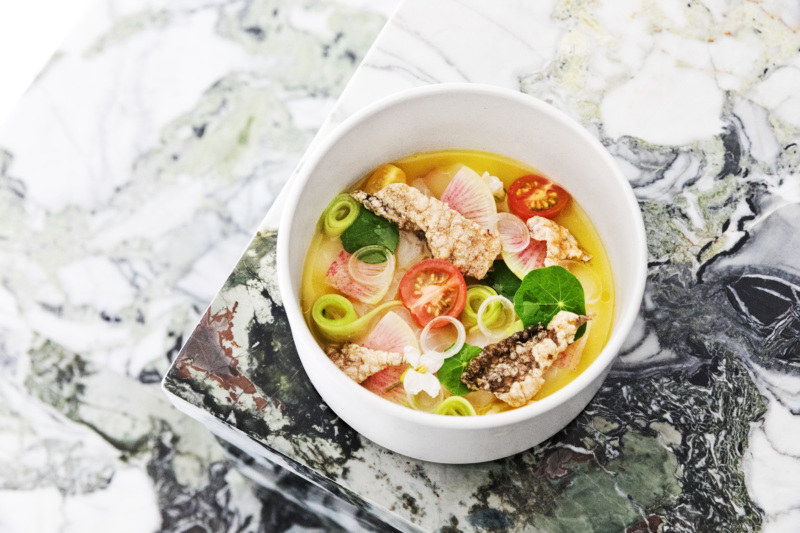
5. If you like spicy, ask for the chiltepinero.
Looking to bring a little extra heat to your Mayan octopus and kanpachi tostada? If you ask nicely, Olivas will bring his hand-carved wooden chiltepinero (chiltepin pepper mill) out from behind the bar, which is adorable and shaped like a tiny cactus. Chiltepin are the wild progenitors of domesticated chiles that grow in the canyons and mountains of southern Arizona and northwestern Mexico. These tiny round peppers are smoky and earthy, with an intense, short-lived zing that keeps things interesting, like nearly everything else at this East Side gem.
Erin Mosbaugh is a food and travel writer who has worked in kitchens in New York and L.A. and co-created the James Beard Award-winning food site First We Feast. Follow her on Instagram and TikTok; follow Resy, too.
















